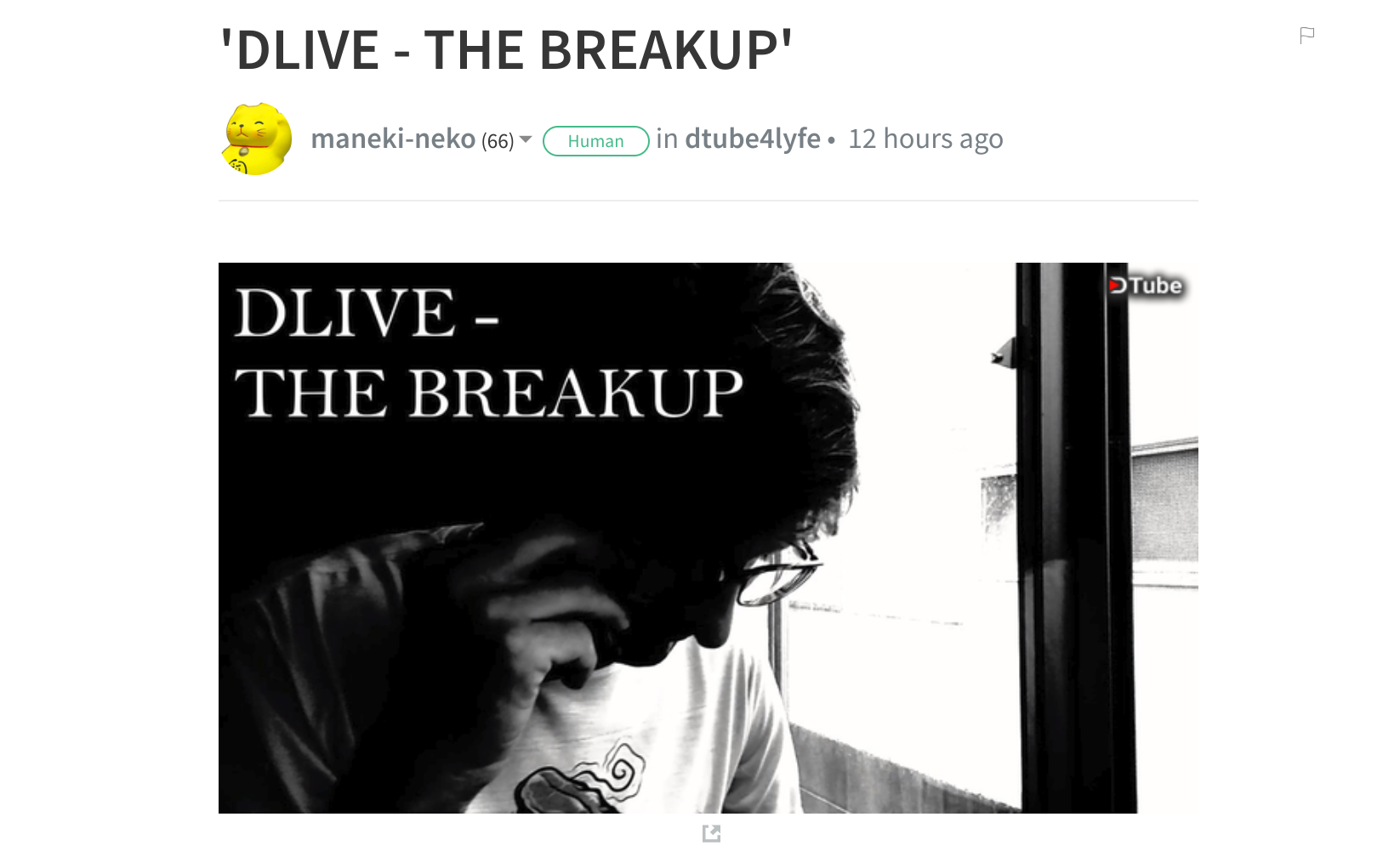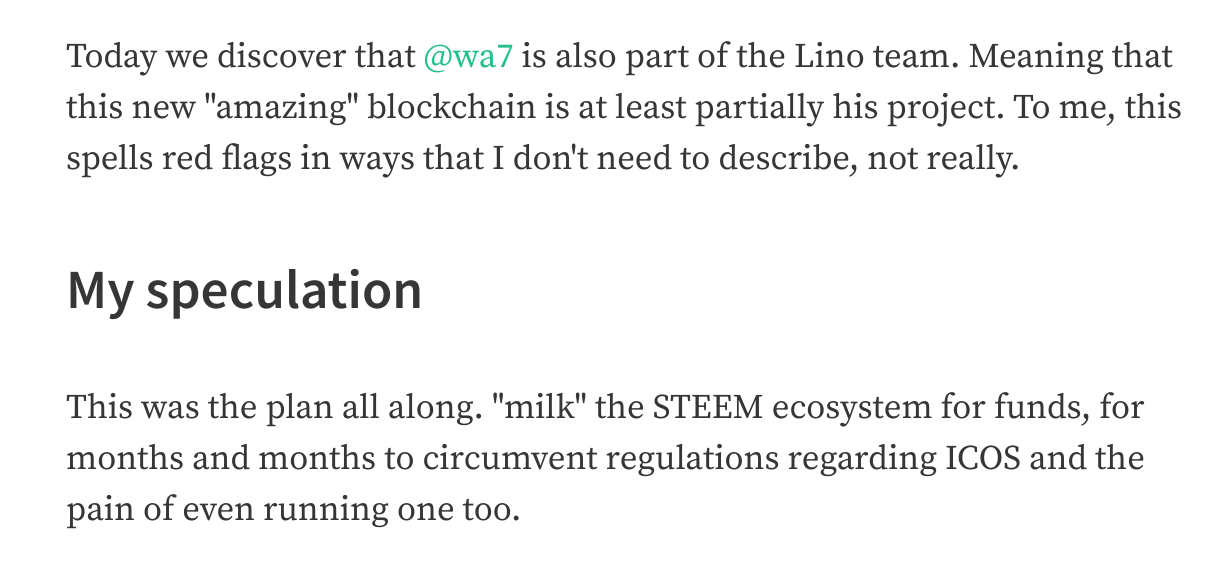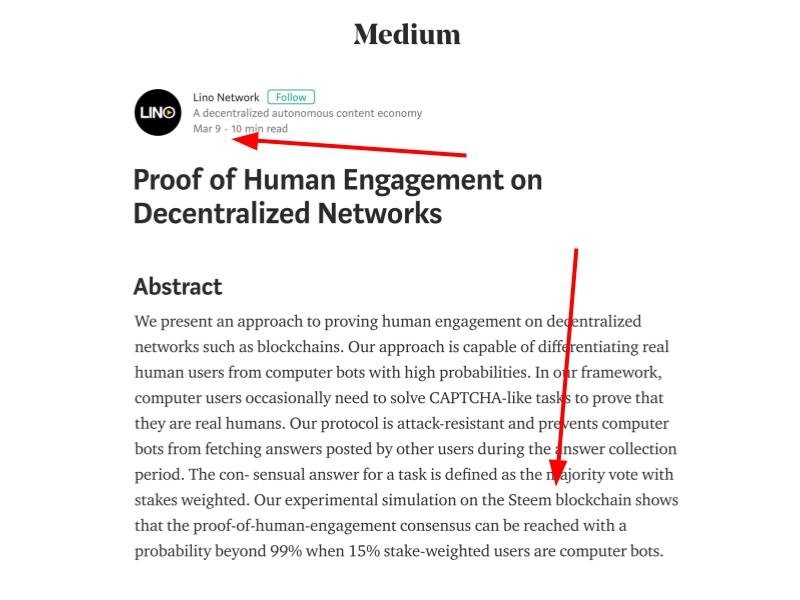
When I first heard that Dlive was leaving Steem I have to admit that I was blindsided. Many of us at Steemit have met the Dlive team in person and heard from them first-hand how excited they were about the engagement they were receiving from Steemians and how happy they were with the platform. Of course, with the benefit of hindsight I now see a very different story, one which leads me to believe (as I discuss later in this article) that the Dlive people do not have a deep understanding of what makes decentralized solutions so valuable, and the importance of establishing oneself as a trustworthy entity in order for those solutions to achieve success. That being said, I wish them the best of luck in all of their endeavors.
After doing a little research of my own, and then reading @meno’s great comment here I have come to the same conclusion he has. I am 99% sure that this was their plan all along. So now what?
From @meno’s comment:

Update: @meno did some more research which you can view here
Were They Ever Truly Here?
If their plan all along was never to truly commit to developing on Steem and adding value to this ecosystem, then they were never really “here” in the first place. So they can’t truly “leave” because they were never really Steemians. And that’s fine. You don’t have to embrace our culture (whatever it is) and our social norms to enjoy the wealth that culture produces. That’s part of what openness is about. But then you can’t hold it against us for questioning your motivations if you leave our community and light the bridge on fire behind you.
As @meno pointed out, when they first came on the scene it was seemingly out of nowhere. The interface was impressively polished, so when they said they had been working on the app behind the scenes for a while (IIRC) I thought, "Wow, these people really care about Steem, they committed all of that time to building a Steem dapp and didn't even tell people about it until they felt it was totally ready." Thinking back on it, I now realize that the reason they had been so silent on Steem was because they weren’t building their app for Steem at all. Instead, what probably happened was that they were building their app and realized that Steem could instantly add a lot of value. And that’s the really interesting part.
Unintentional Advertisements
In a way, this incident highlights exactly what is so special about Steem, and the application-specific approach we have used‒and still use‒to guide development. Our goal has always been to build a blockchain protocol that developers can use to enhance their web applications with blockchain and cryptocurrency technology today. That means that if we do our jobs well, anyone with a web interface can make it way better, almost instantly, thanks to Steem. While it’s true that Dlive “took advantage of that,” that’s also kind of the point of value propositions.
The Facts
It appears fairly obvious at this point that Lino and Dlive are connected, but that Lino’s stack was not capable of enabling any kind of functionality and is still not capable of doing so. That being the case, they looked to a more advanced protocol to provide them with the functionalities that they were lacking. A protocol that has low barriers to entry, fee-less transactions, and is optimized to incentivize content creators.
In that way, Dlive’s decision to use Steem is an obvious endorsement of it, especially because they were planning to compete with it all along. Imagine it came out that Apple was secretly powering all of its phones with Android, but “only until our OS ready.” It’s almost comical to think that they're actually broadcasting this fact!

That being said, I believe in open source and decentralization, and I support all other projects that sincerely embrace those two values. That’s why you’ll never hear me refer to other projects as “competitors.”
Steem’s Upside
But there are other ways in which the Steem ecosystem has benefited from Dlive’s involvement and for which we should actually be grateful. They helped spread the word about Steem to live streamers and gamers, many of whom have outright stated that they are now full-blooded Steemians who are as offended by Dlive’s behavior as I am. Thankfully, because Steem accounts are universal across all Steem Dapps, all of those people can immediately begin using any other Steem Dapp like steemit.com, d.tube (which now also has live-streaming ;) ), Busy.org, Steempeak.com, and more continue to come online every day. In fact, as I was writing this article a new polling dapp was brought to my attention. I even created one of the first polls, which I invite you to answer here.
They also helped demonstrated Steem’s versatility by showing that it could power a new use-case and in the process, helped to distribute $3 million worth of rewards to a new category of content creators for the Steem ecosystem. At the end of the day, all we care about is that content creators get rewarded for their creative output. We’ll just have to wait and see if Dlive can deliver more value to content creators than $3 million in 7 months.
I even think they delivered a ton of value by showing that Steem could be used to power what I would call “hybrid, centralized-decentralized applications”. One of the principles I believe we hold at Steemit is that it isn’t about how much you decentralize, but what you decentralize. Steem decentralizes speech and money, because these are two things that cannot be entrusted to any single person or entity. For the sake of speed and scalability we leave it to developers to determine for themselves whether they need to decentralize other parts of their stack. D.tube, for example, decentralizes their video storage by leveraging IPFS. But centralized solutions are often more efficient, which is why Dlive was able to create such a responsive experience.
The Importance of Trust
What I think the Dlive people fail to understand is that while centralized solutions can often deliver efficiencies, people’s willingness to tolerate centralization is directly related to the trustworthiness of that entity. While I can understand why applications would choose to use centralized solutions in parts of their stack for the sake of efficiency, in light of these events, the ease with which Dlive embraced such solutions indicates more than just a pragmatic calculation. It signals that they are governed by a different philosophy altogether. I am now inclined to believe that their comfort with embracing centralization was due to the fact that they had to understand at a very conscious level that their entire strategy‒a strategy that unfolded over many months‒was based on outright deception. Of course they embraced centralization: that’s what untrustworthy people do.
Of course, now they claim they will decentralize more, and that they truly care about decentralization. Everyone who decides to leverage their services to store their speech will have to determine for themselves whether they can be trusted to safeguard that priceless treasure.
Final Thoughts
After mulling this over, and running the full gamut of emotions, I am now at peace with sequence of events. I believe that we got far more out of their involvement than we will lose in their absence. I believe that existing Steem applications like d.tube, as well as those that come in the future, will rush to fill this gap. In fact, Vimm.tv (@vimm) is now getting more attention than ever and perhaps this incident demonstrates how important it is that we focus our attention on developers and applications that are more grassroots and community-led. I definitely don’t think that this incident should make us fearful of newcomers or overly skeptical of outsiders. Steem’s strength comes from its openness in every way.
We are an amazing community that more and more people want access to every day. Anyone is free to join and participate in the wealth we are creating, and they are free to leave. Not only that, but the simple act of leaving does not require we respond with animosity. Developers have to choose the stack that's right for them. As more and more developers come to Steem, that also means that more developers will also leave Steem if they are able to find a platform that better suits their needs. What matters is the "net" flow, and far more developers are remaining on Steem than are leaving.
That being said, we design Steem to enhance all web interfaces, including those that also leverage other blockchain protocols, and see no reason why one would forego Steem integration simply because they also want to leverage another protocol. Steem is designed to be additive to every business model and not mutually exclusive to any ... other than those that seek to control your information.
Bon Voyage
I wish the Dlive team the best of luck. We live in a chaotic universe, and the only way to fight that chaos is to work together with people we trust to build better and more trustworthy systems. I believe that the universe is grotesquely unkind to those who fail to act in accordance with that truth, and wouldn’t wish the negative outcomes it is capable of delivering on anyone.
A Little Comedy
So as not to end this post on such a gloomy note, I want to share the following video from @maneki-neko which I believe demonstrates (albeit in a seemingly small way) how apparently negative incidents like this often are the very cause of the positive incidents that succeed them. While there has been a ton of great, authentic content generated by Steemians, this video is the funniest I’ve seen while still being authentically Steemian. It is only natural to wish that we could build systems that eliminate all negative events like these, but it is also the case that the only systems that survive over the long run (i.e. are antifragile) are those that require trauma so that they can learn to adapt and evolve.
https://d.tube/#!/v/maneki-neko/580ep4bd

